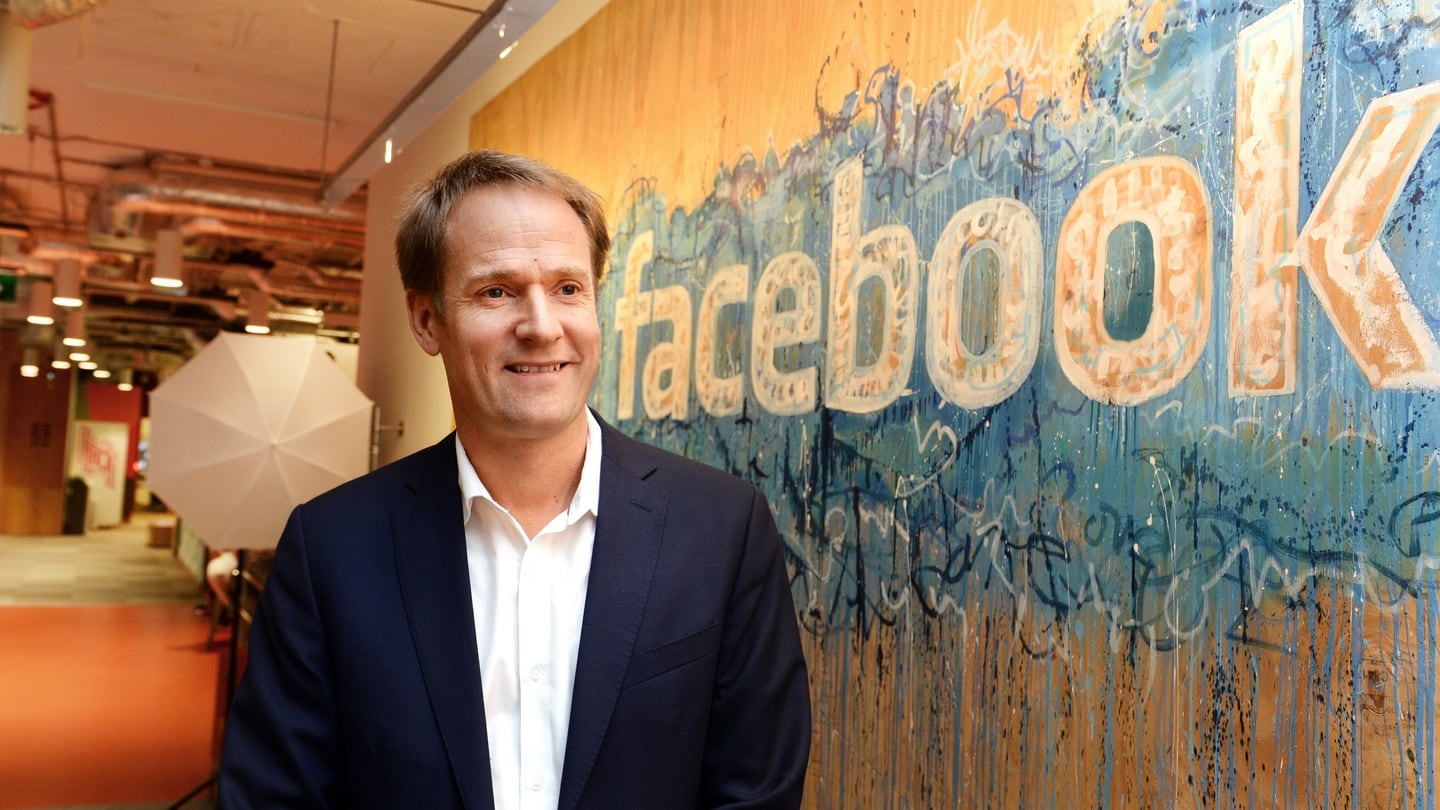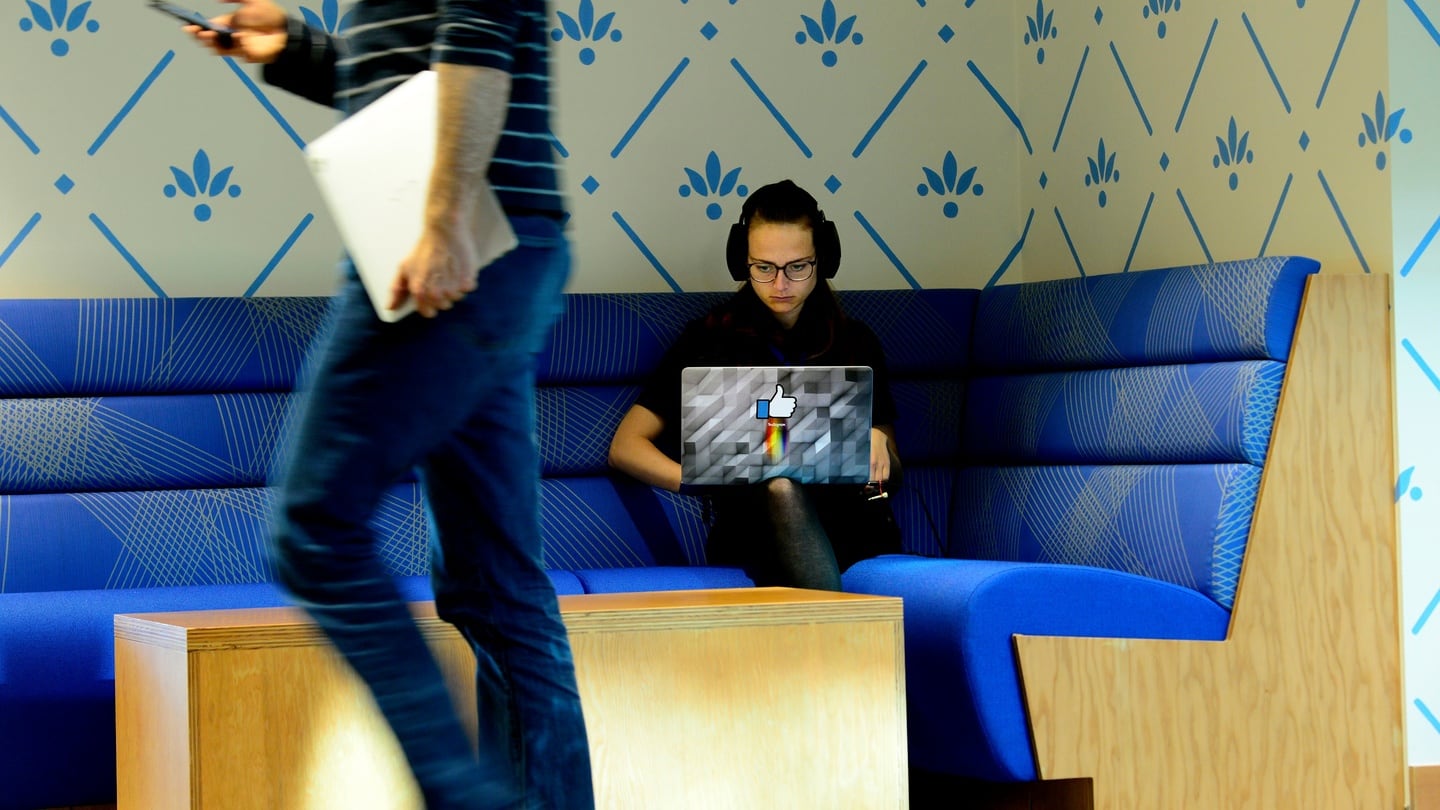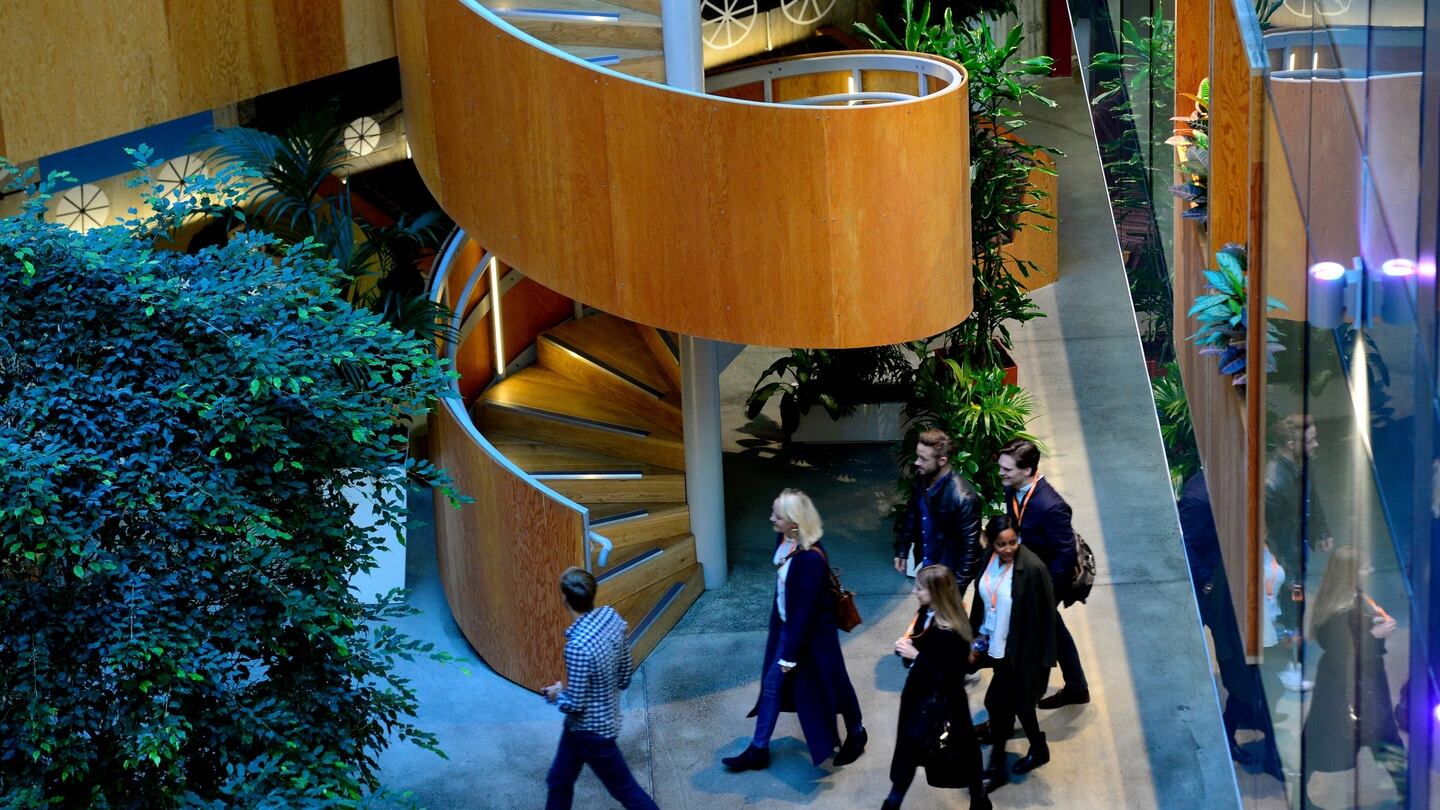The highlight of Open House Dublin 2016 is undoubtedly Facebook's headquarters beside the Bord Gáis Energy Theatre in the oh-so-chic south docklands.
Its exterior was designed by "staritect" Daniel Libeskind while the interior was drawn up by Frank Gehry who, according to Vanity Fair, is "the most important architect of our age". To have the work of these great rivals in the same building raises an eyebrow to say the least.
Facebook, whose Dublin operation has grown from just 30 employees in 2008 to 1,500, was attracted to 4-5 Grand Canal Square not only by its location and size "but also because the buildings were in 'shell' condition", according to Gareth Lambe, head of Facebook Ireland.
0 of 20
“This gave us the freedom to design the interior spec to fit with Facebook’s culture while incorporating the building’s rough and industrial feel with the needs of a contemporary office,” he says. “By doing so, we’ve reflected our problem-solving hacker culture, created a work-in-progress atmosphere and reflected our ethos that the journey is only 1 per cent complete.”
A visit to 4-5 Grand Canal Square during the week confirms that this is no ordinary office block. Security is tight – visitors with appointments must produce photo ID – even as Jimi Hendrix's Foxy Lady wafts over the reception area from the Urban Picnic Café where Facebook's twentysomething-heavy workforce are enjoying breakfast at their employer's expense.
Once through the security barriers and under posters with statements such as, “Move fast and break things”, “What would you do if you weren’t afraid?”, “Proceed and be bold” and “Done is better than perfect”, you begin a journey through a space where corporate cool meets industrial garage meets funky furniture meets high-tech meets street art.
There is obvious tension between the corporate and industrial elements – expensive glazing side-by-side with concrete supports, structural steel protruding from a laminate-clad staircase, exposed services and air conditioning alongside art installations – but the atmosphere throughout is very relaxed.
This is achieved by surrounding, at ground floor level, the building’s vast six-storey inner atrium space with cafés and meeting areas. As all the office floors above open onto the atrium, the sounds and smells of the ground floor work their way up through the entire structure. As a result, the building doesn’t feel like a typically cold and quiet office – even though much of the space is open-plan – instead it’s somewhere between a buzzy café and a conference room.
The standout element of the interior design is the number and variety of meeting areas and snugs. Most of these are situated around the inner atrium and are loosely defined spaces, delineated only by a collection of beanbags, puffs and sofas. The idea is to create break-out spaces, near people’s desks, where they can go to discuss work-related issues away from their computer screens, have a laugh and maybe get a different perspective on things from a passing colleague.
There is also a staggering number of video conferencing rooms and booths as this allows the Dublin office keep up with the company’s global operations and discuss what has worked where and why. These have cute “room tools” screens outside so you can check availability and book a time.
The international dimension, too, is impossible to avoid. Flags of many nations hang from ceilings, while catering for the food, faith and cultural requirements of the 72 nationalities that make up the company’s staff can be “challenging at times”, says Lambe, “but the positives from having probably the most international workforce in Dublin are worth the effort of themed food, prayer rooms, yoga classes, Krav Maga and so on”.
However, there is also a nod to Ireland as Ogham writing has been incorporated on concrete walls throughout the building while many meeting rooms feature a famous Irish quotation, movie or band.
Facebook gives a generous amount of wall and ceiling space to its artist-in-residence programme. This brings local artists in for a few months to work in the building so that they can feel the vibe of the place and develop artwork that represents the staff and company in general.
Many of the installations feature spacemen – one has the Dublin skyline reflected on his helmet – while the moon is another common theme. “These reflect the fact that Facebook as a company goes above and beyond in our work and what we want to achieve,” says Lambe.
There are a number of newer elements to the building, like the Analog Lab where employees go to create art or design things with a 3D printer or laser cutter. The SMB zone shows how SMEs use the social network to market their goods and develop their businesses while the Partner Area shows off Facebook's family of apps and acquisitions (Whatsapp, Instagram, Oculus VR, etc) and outlines how its various bets in the field of artificial intelligence may develop.
In among all this are the de rigueur tech company office essentials such as pool and foosball tables, micro kitchens with the healthiest of snacks and a rooftop terrace with panoramic views over the city.
Apart from the cute design details, such as the elevators with what's on each floor marked on the doors, the thing that stands out the most is the atmosphere. As I'm leaving, the super-cool 12-inch version of Fools Gold by The Stone Roses is wafting around the atrium, the café is full of chat and bright young things bound around the place with energy and optimism.
Could the building’s design be in part responsible for all this can-do positivity? “It certainly makes for a more productive environment for our employees,” says Lambe.
Facebook’s offices at 4-5 Grand Canal Square will be open to the public on Saturday, October 15th from 11am to 5pm. This event is now fully booked
Residential market – area of concern
The scarcity and cost of renting an apartment in Dublin is a “big issue” for Facebook, according to Gareth Lambe.
“This really concerns me,” he says. “It’s having a big impact for us. We’ve 72 nationalities working for us in Dublin – probably the most international workforce in the city – and they’ve been finding it very hard to get a place to live. Something really needs to be done to get the residential market back building again.”
Lambe, who is Irish, is also “very concerned” that a lack of rental accommodation in the capital will deter foreign direct investment. “It’s not a blocker of FDI yet but I’m concerned it will become one,” he says.
Facebook, which has grown its Dublin headcount to 1,500 since opening here in 2008, has space for around 2,000 staff at 4-5 Grand Canal Square. “So we’re not looking at securing another office location in Dublin,” says Lambe. “We’re good for a while yet. We could also reorganise internally to give us more space to grow here, so into the medium term we’re nicely set up in Dublin.”
On Brexit, Lambe believes there will be opportunities for Ireland as a result of the UK’s vote to leave the EU but “Facebook is growing so fast we’re not having any conversations about relocating any part of our UK operations to Ireland”.
Facebook Dublin: The Facts
4-5 Grand Canal Square was completed in 2011 by Joe O'Reilly's Chartered Land and sold in a Nama-enforced sale to DZ Bank's Union Investment for €232 million in early 2015.
The buildings have a combined 23,226sq m (250,000sq ft) of space.
Facebook moved into No 4 in 2014 and No 5 in 2015. It took six months for each block to be fitted out to the company’s requirements.
The social network pays rent of around €10.5 million a year for its Dublin headquarters. This is under two leases, with No 4 rented at €376 per sq m (€35 per sq ft) and No 5 at €484 per sq m (€45 per sq ft).
4-5 Grand Canal Square are BREEAM-rated buildings based on an environmental assessment of their performance and construction.
All desks at Facebook’s offices in Dublin are sit/stand units.
The Dublin office is the only building outside of its Menlo Park headquarters in California that is 100 per cent occupied by Facebook.
The social network is also building a 57,000sq m (613,542sq ft), €200 million data centre in Clonee, Co Meath which is due to come online by early 2018. It could employ more than 200 people when up to full capacity.





























